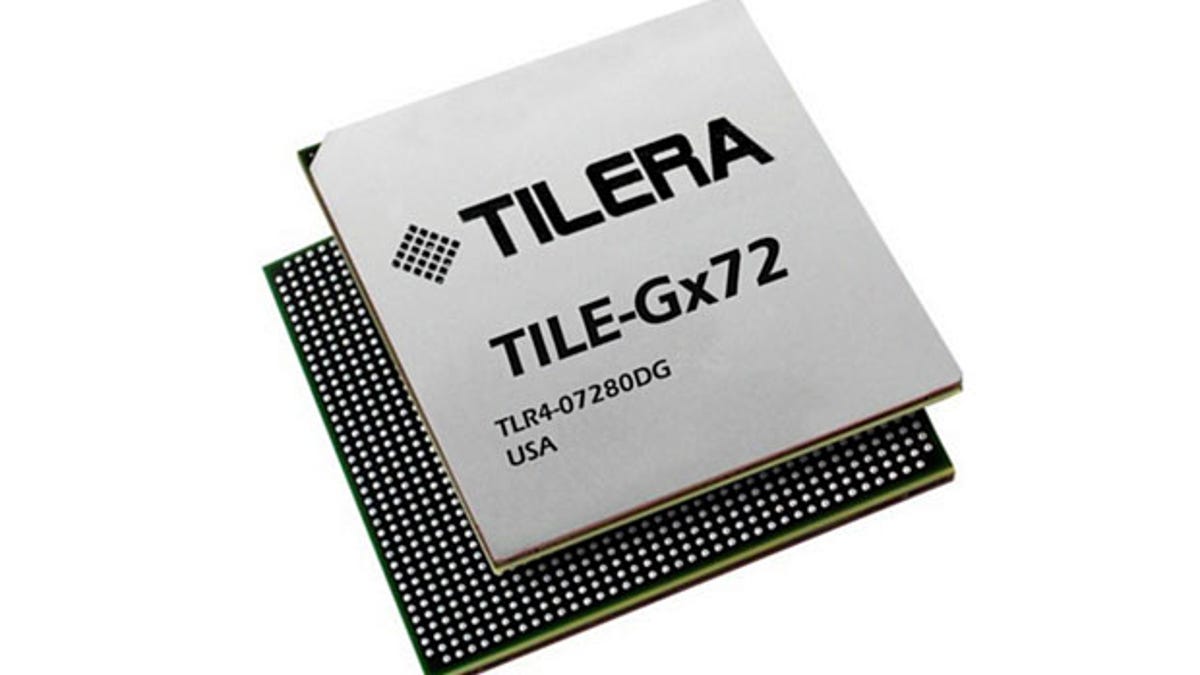Tilera's 72-core chip doubles down on multicore approach
The Tile-Gx72 has twice the processing cores as its predecessor, showing that Tilera isn't shying away from its parallel-programming philosophy.

Tilera, one of the most aggressive advocates of the multicore-processor approach, today announced a new member of its Tile-Gx family that doubles the number of computing engines to 72.
The Tile-Gx72, the company's new flagship chip, isn't geared for general-purpose computing tasks like running smartphones or PCs. Instead, it's for tasks that can be sliced up into many independent operations -- networking equipment handling multiple data streams or servers for handling lots of streams of media.
But even if you're not going to find Tilera Inside stickers on your next tablet, it's an interesting product, because it represents one of the main schools of thought about how to deal with the thorny problem of getting computers to run faster. Moore's Law has done a good job predicting that the number of transistors doubles every two years, but real-world performance isn't just about the amount of chip circuitry. It's also about how fast those transistors can switch on and off, and power-consumption limits have kept processor clock rates in check.
Tilera is trying to sidestep the issue by using multicore processors. That's also been the chip design approach at companies such as Qualcomm, Intel, Samsung, Apple, IBM, Oracle, and AMD, of course, where dual-core and quad-core chips are common and eight-core chips are becoming more ordinary.
But Tilera has embraced parallel processing much more enthusiastically, arguing that programmers who can't handle the rigors will be left behind as the industry shifts. Ultimately, the company believes, processor cores will become a building block of computing hardware the way chip transistors are today.
Parallel programming is intrinsically more difficult, though, than writing software that's a simple series of steps. And parallel processing has hard limits: Amdahl's Law describes precisely how parallel programming is limited when even a small fraction of a computing process can't be spread over multiple processing engines.
"Multicore general-purpose programming has improved considerably" since early days, said Moor Insights and Strategy analyst Patrick Moorhead. "Intel, AMD, and Nvidia have all added a considerable amount of tools to better simplify it, but it's not nearly as easy as programming for just a few cores." And there are other limits given that Tilera chips aren't compatible with other chips' instruction sets.
"Tilera abstracts away most of the underlying instruction set, but is limited by the amount of tools and compilers. To get total optimization, it makes sense to code more directly to the metal like in the case of many games on ARM architecture, but you don't have to," Moorhead added.
So for now, at least, Tilera's chips are geared for tasks that are easily parallelized. The new Tile-Gx72 is designed to take on more work than its 36-core predecessor. It runs a version of Linux that can handle all the 64-bit cores, either allocating specific cores to specific tasks or drawing on them as a pooled resource.
The chip itself has a built-in switch to handle communications among its cores and to link them to its 23MB of shared cache memory and to external input-output systems. Those include six PCI Express ports, eight 10Gbps Ethernet ports, and four DDR3 memory controllers.
Its packet processing subsystem can classify up to 240 million packets of network data as it arrives, and it also can encrypt and decrypt network data using several encryption protocols, Tilera said.
The company is sampling the chip today and didn't disclose pricing or its schedule for high-volume shipments.

